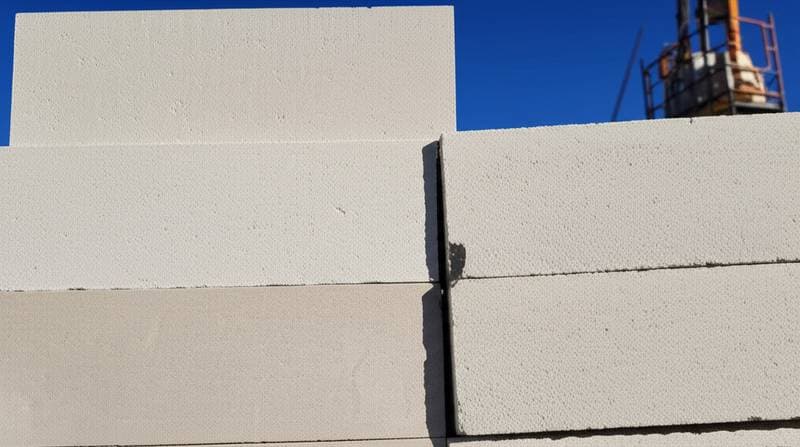Zero-Cement Geopolymer Bricks: Transforming Sustainable Construction
Zero-cement bricks, known as geopolymer bricks, alter the approach to masonry in construction projects. These bricks form through chemical reactions involving industrial byproducts such as fly ash or slag and alkaline activators, creating a binder that achieves strength equal to or greater than traditional Portland cement. This process eliminates the substantial carbon emissions associated with cement production.
The environmental impact stems from avoiding the energy-intensive calcination of limestone, a key step in cement manufacturing. Geopolymer bricks also incorporate waste materials, reducing reliance on virgin resources. Builders benefit from a material that supports eco-friendly practices without sacrificing performance.
Advantages and Challenges
Advantages
- Reduced carbon emissions through avoidance of limestone processing.
- Compressive strength that matches or exceeds standard concrete blocks.
- Enhanced resistance to chemicals, including salts and acids.
- Superior thermal stability suitable for diverse climates.
- Utilization of industrial waste, which decreases landfill usage.
Challenges
- Limited availability in certain geographic areas.
- Elevated initial costs pending larger-scale production.
- Variations in color based on material sources.
- Necessity for precise curing conditions to ensure uniformity.
- Relative scarcity of extensive long-term field data compared to conventional masonry.
Cost Considerations
The material cost for zero-cement bricks typically ranges from 20 to 40 percent above that of standard fired clay or concrete blocks. Prices for individual bricks fall between 80 cents and 1.50 dollars, while installed wall systems cost approximately 10 to 15 dollars per square foot. Factors such as transportation distance, small-batch manufacturing, or custom finishes can increase expenses. Local sourcing of fly ash and activators helps lower overall costs.
Over time, these bricks prove economical due to their durability and low maintenance needs. Projects in regions with abundant industrial byproducts experience the most significant savings. Architects and builders should factor in long-term benefits when evaluating budgets.
Durability and Upkeep
Geopolymer brick walls endure for 50 years or longer when properly constructed. The material withstands freeze-thaw cycles, chemical attacks, and color fading more effectively than many cement-based options. Regular inspections focus on mortar joints for cracks or moisture intrusion, performed every few years.
Maintenance remains straightforward, involving mild detergent and a soft brush for cleaning. Harsh acid-based cleaners damage joint materials, so alternatives are essential. Protective sealants enhance longevity in exposed environments.
Essential Specifications
Verify these specifications when selecting geopolymer bricks:
- Compressive strength of at least 5,000 psi for load-bearing applications.
- Water absorption rate under 10 percent for outdoor use.
- Freeze-thaw resistance aligned with regional climate requirements.
- Dimensional accuracy within 1/8 inch per brick.
- Fire resistance comparable to or surpassing traditional masonry units.
These metrics ensure compliance with building codes and project demands. Consult suppliers for certified test results.
Preparation for Installation
Preparation mirrors standard masonry procedures. Ensure foundations or footings are level, well-drained, and capable of supporting wall loads. Install a water barrier beneath the initial course to prevent moisture wicking.
For exterior walls, incorporate site grading that directs water away from the structure. Mark and locate underground utilities prior to any excavation. These steps minimize risks and promote structural integrity.
Installation Process
Install geopolymer bricks similarly to clay or concrete units, following these steps:
- Establish layout lines and dry-lay the first course for alignment.
- Prepare mortar, preferably polymer-modified or geopolymer-based for compatibility.
- Place bricks with staggered joints to distribute loads effectively.
- Tool joints to a smooth finish after initial mortar setting.
- Remove excess mortar before it fully hardens.
- Protect the work with covers during curing to control humidity and temperature for several days.
Professional oversight ensures optimal results, particularly for complex layouts.
Design Patterns and Variations
Popular patterns include running bond, stack bond, and Flemish bond. Running bond distributes structural loads evenly, making it ideal for most applications. Stack bond works well for aesthetic facades but requires reinforcement such as mesh or ties.
Suppliers provide options with textured or pigmented surfaces resembling natural stone or aged brick. Select patterns that align with architectural goals and site conditions.
DIY Projects Versus Professional Installation
Experienced individuals can handle small-scale features like garden walls or planters using basic tools. However, structural walls, multi-level constructions, or moisture-prone areas demand professional masons. Engage experts for projects involving load-bearing elements or intricate designs.
Addressing Common Issues
Joint cracks often arise from inadequate curing or foundation settlement. Repair by removing loose material and repointing with matching mortar. Efflorescence, appearing as white deposits, indicates moisture movement; remove it dry and improve drainage or apply joint sealers.
Color inconsistencies from uneven mixing can be remedied with breathable masonry stains. Early identification prevents escalation of problems.
Performance in Various Climates
Geopolymer bricks excel in freeze-thaw environments, coastal salt exposure, and arid heat. In colder regions, opt for low-absorption variants paired with vapor-permeable sealers. Coastal installations benefit from periodic rinsing to clear salt accumulation.
Their thermal mass aids temperature regulation in warm climates, contributing to energy efficiency. Adapt selections to local conditions for maximum effectiveness.
Comparable Options
When geopolymer bricks are unavailable, stabilized compressed earth blocks or lightweight aerated concrete serve as alternatives. These options minimize cement content and enhance insulation, though they lack the full chemical resistance of geopolymer materials.
Evaluate based on project needs, availability, and performance goals.
Advancing Construction with Geopolymer Innovation
Zero-cement geopolymer bricks demonstrate that environmental responsibility enhances rather than hinders material quality. From modest garden features to comprehensive eco-friendly homes, these bricks deliver robust performance and reduced ecological impact. Integrate them into designs to support sustainable building practices.
